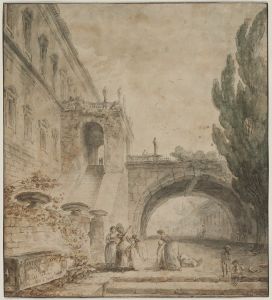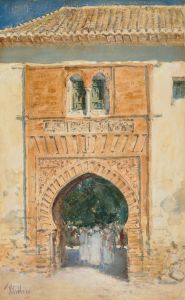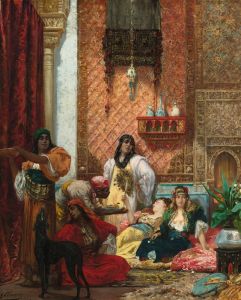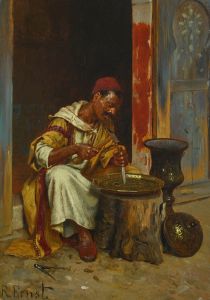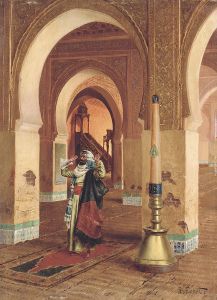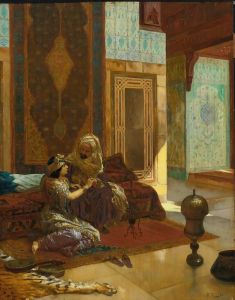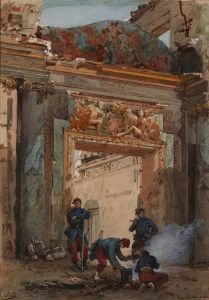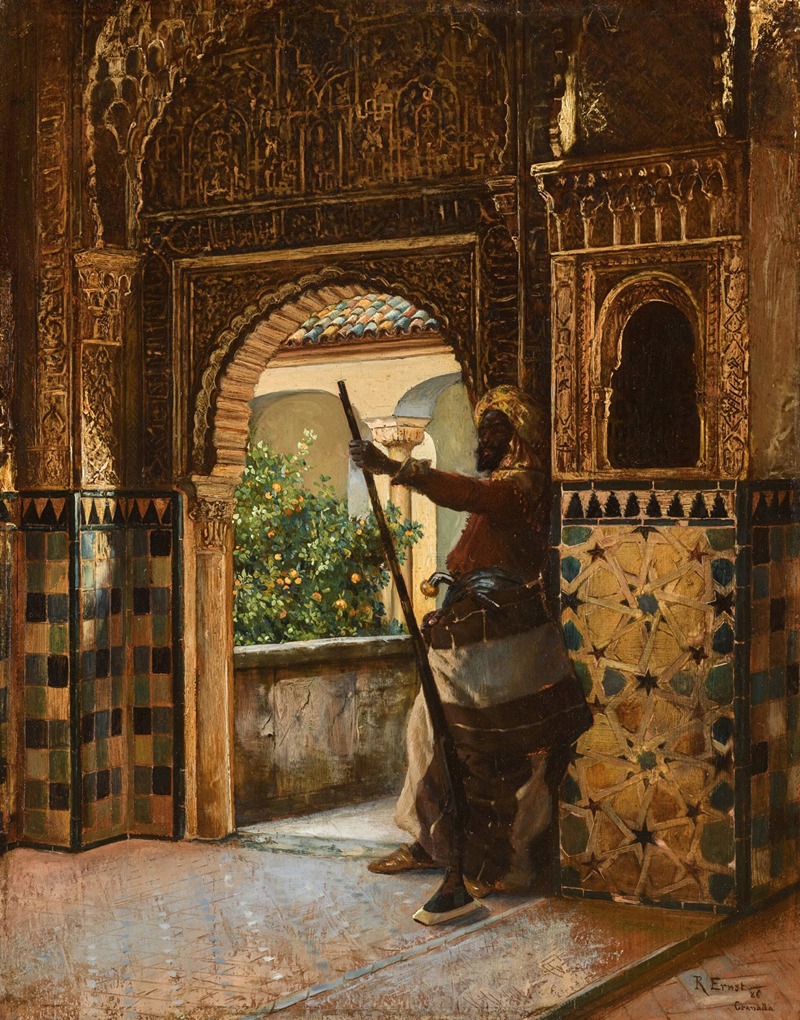
Guarding the Alhambra
A hand-painted replica of Rudolf Ernst’s masterpiece Guarding the Alhambra, meticulously crafted by professional artists to capture the true essence of the original. Each piece is created with museum-quality canvas and rare mineral pigments, carefully painted by experienced artists with delicate brushstrokes and rich, layered colors to perfectly recreate the texture of the original artwork. Unlike machine-printed reproductions, this hand-painted version brings the painting to life, infused with the artist’s emotions and skill in every stroke. Whether for personal collection or home decoration, it instantly elevates the artistic atmosphere of any space.
Rudolf Ernst was an Austrian painter known for his Orientalist works, which often depicted scenes inspired by the Middle East and North Africa. His painting "Guarding the Alhambra" is one of his notable works that reflects his fascination with exotic and historical themes. Ernst was born in Vienna in 1854 and studied at the Academy of Fine Arts in his hometown. He later moved to Paris, where he became part of the Orientalist movement, a genre that romanticized and depicted the cultures of the East through a Western lens.
"Guarding the Alhambra" showcases Ernst's skill in capturing intricate architectural details and vibrant colors, which were characteristic of the Alhambra, a palace and fortress complex located in Granada, Spain. The Alhambra is renowned for its Islamic architecture, and it was originally constructed as a small fortress in 889 AD. It was later converted into a royal palace in 1333 by Yusuf I, Sultan of Granada. The site is a UNESCO World Heritage Site and is considered a masterpiece of Moorish architecture.
In the painting, Ernst depicts a scene that likely takes place within the Alhambra's walls, featuring a guard or sentinel. The guard is dressed in traditional attire, which reflects Ernst's attention to detail and his interest in the costumes and cultures of the regions he painted. The setting is rich with architectural elements typical of the Alhambra, such as horseshoe arches, intricate tile work, and lush gardens. These elements highlight Ernst's ability to create a sense of place and atmosphere, transporting the viewer to the historical and cultural context of the Alhambra.
Ernst's work is often characterized by its meticulous attention to detail and vibrant use of color, which are evident in "Guarding the Alhambra." The painting not only serves as a visual representation of a historical site but also reflects the broader Orientalist movement's fascination with the exotic and the otherworldly. Orientalism, as a genre, has been critiqued for its romanticized and often inaccurate portrayals of Eastern cultures, but it remains an important part of art history for its influence on Western perceptions of the East.
Rudolf Ernst's "Guarding the Alhambra" is a testament to his skill as an artist and his ability to capture the allure of historical and cultural subjects. While the painting itself is a product of its time, reflecting the interests and attitudes of the late 19th and early 20th centuries, it continues to be appreciated for its artistic merit and its depiction of one of the world's most famous architectural sites. Ernst's work remains a part of many private and public collections, where it continues to be studied and admired for its contribution to the Orientalist genre.





